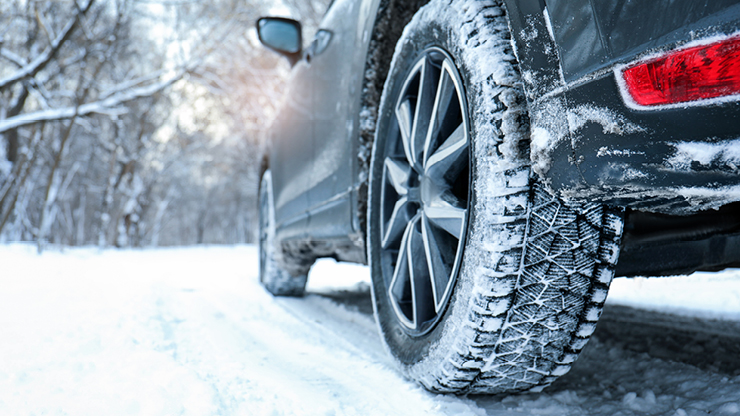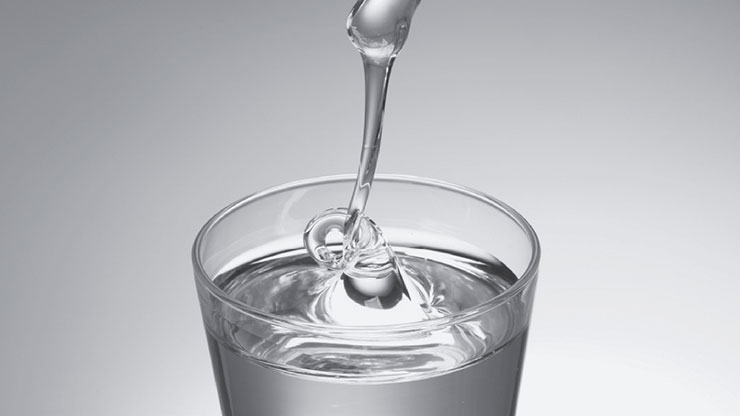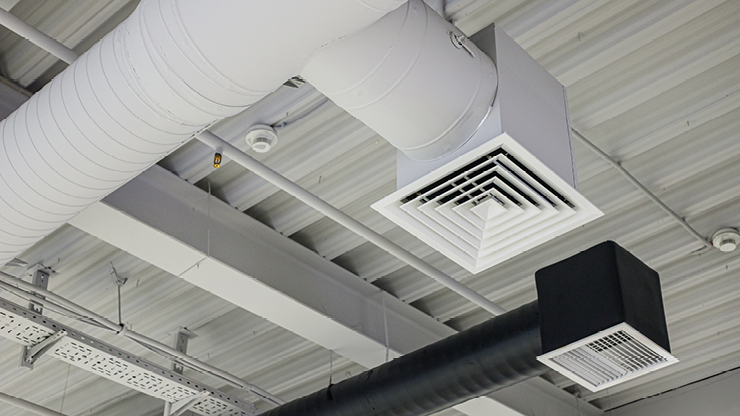Liquid Polybutadiene
Liquid polybutadiene is a liquid synthetic rubber used primarily for tires or rubber products.
Although its material properties may vary based on molecular weight, composition, and post-processing, liquid polybutadiene is a reactive plasticizer that is cross-linkable with rubbers. Tires or rubber products containing liquid polybutadiene exhibit superior processability and mechanical properties.
The excellent effects of liquid polybutadiene additives make them a common component in tires, rubber products, adhesives and sealants, paints and coatings, printing plates, lubricant oils and greases, electronic materials including insulating and packaging materials, and more.
How it’s Made: Polymerization of Butadiene
The term polybutadiene refers not to just one compound but to a group of polymers formed by the polymerization of 1,3-butadiene. This organic compound is used almost exclusively in the production of synthetic rubber and can be produced from various fossil fuels or synthesized renewably from ethanol.
As it’s polymerized, 1,3-butadiene forms varying ratios of cis, trans, and vinyl polybutadiene, which can be controlled using various catalysts to produce a material best suited to a particular application. Polybutadiene may also be functionalized, or modified, to further tailor its properties.
To manufacture liquid polybutadiene rather than solid polybutadiene, catalysts and processes that produce lower molecular weight are used, which mainly include anionic polymerization and radical polymerization.
Advantages of Liquid Polybutadiene
Liquid polybutadiene is a versatile compound with many advantages:
- Reactive plasticizers that can co-vulcanize with rubbers such as NR, IR, SBR, and BR
- Reduces Mooney viscosity and significantly improves processability
- Reduces migration and improves shelf life and durability
- High grip performance
- Electrical insulation properties
- Chemically resistant to alcohols, acids, and alkalis
- Low levels of volatile organic compounds (VOCs) and low odor
- Can be manufactured sustainably from ethanol
Disadvantages of Liquid Polybutadiene
When not combined with other rubbers or plastics, liquid polybutadiene has a few disadvantages:
- Low chemical resistance to oils and solvents
- Low heat resistance
- Mostly produced using petrochemicals
Applications of Liquid Polybutadiene
As a liquid synthetic rubber and additive that provides excellent material properties, liquid polybutadiene is used in a wide variety of applications.
Liquid polybutadiene is commonly used in car tires, where it provides abrasion resistance, lower rolling resistance, longer tire lifespan, and better fuel economy. It also sees use as an additive in automotive sealants and structural polymer adhesives thanks to its favorable material properties.
Liquid polybutadiene may also be used as a plasticizer or added to heavy-duty hoses, thermoset polyurethane products, printing plates, footwear, hot melt adhesives, pressure-sensitive adhesives, electronics insulation, and other rubber or plastic products.
In coatings, liquid polybutadiene can be used to reduce levels of volatile organic compounds (VOCs). Adding solid fillers increases viscosity and makes the coating difficult to use, so liquid polybutadiene is an ideal alternative for low-VOC coatings.
The use of liquid polybutadiene in coatings enhances film flexibility, improves water and chemical resistance, and ensures stable performance even in low-temperature environments.


Liquid Polybutadiene from Kuraray
Kuraray offers several grades of liquid polybutadiene (L-BR) for use in a wide range of applications, and also provides liquid polyisoprene (L-IR) and liquid polystyrene-butadiene (L-SBR) under the KURARAY LIQUID RUBBER product line.
Kuraray’s liquid polybutadienes offer a low-VOC liquid rubber that is transparent, colorless, and almost completely odorless. Depending on their molecular weight, they can be used as a reactive plasticizer and can replace either rubber or process oil in many formulations.
When used as a plasticizer, the good flowability of Kuraray’s liquid polybutadienes reduces Mooney viscosity and allows for more efficient mixing, saving both time and power. KURARAY LIQUID RUBBER grades are also co-vulcanizable with base rubbers, significantly reducing migration. Together, these properties improve production efficiency, lower power consumption, increase the longevity of mixing equipment and products, and reduce emissions.

Low Vinyl Liquid Butadiene Rubber
Liquid butadiene rubber refers to liquid polybutadiene, a synthetic liquid rubber made from butadiene. These grades of liquid polybutadiene, which are designed with molecular weights lower than solid rubbers and higher than conventional plasticizers, are excellent reactive plasticizers that can co-vulcanize with rubber and prevent bleeding and migration. With a wide variety of viscosities and molecular weights, these grades are suitable for applications from automobile tires to rubber components. Their low glass transition temperatures (Tg), resulting from low vinyl content, make them especially well-suited for use in rubber products designed for cold climates—such as winter tires, snowmobile treads, and conveyor belts.
Features & Benefits
Kuraray’s homopolymer liquid butadiene rubber offers:
- A range of viscosities and molecular weights
- Low glass transition temperatures
- Prevention of bleeding and migration
- Colorless, transparent, low odor, and low VOC
- Strong tack and adhesive properties
Applications
Homopolymer liquid butadiene rubber can be used in:
- Tire sidewalls, treads, and cushions
- Automotive sealants, coatings, and adhesives
- Hot melt and pressure-sensitive adhesives
- Printing plates
- Thermoset PU modification
- As a reactive plasticizer
Do you need a high-quality reactive plasticizer that controls bleeding and migration?
Get in touch with our experts at Kuraray using the contact form below to learn more about the grades of homopolymer liquid butadiene rubber we offer.
High Vinyl Liquid Butadiene Rubber
Kuraray’s two grades of high vinyl liquid butadiene rubber can be used as coagents for peroxide curing of EPDM rubber, due to their high vinyl content, which enhances crosslinking efficiency. In EPDM rubber formulations, coagents such as TAC (triallyl cyanurate) are used to enhance cure rate and improve compression set. However, by using these grades as coagents, it is possible to suppress concerns associated with TAC, such as bleeding, odor, and VOC emissions, while achieving excellent cure kinetics and optimum compression set.
Features & Benefits
Kuraray’s high vinyl liquid butadiene rubber grades offer:
- Can be used as coagents for peroxide curing of EPDM rubber
- Improved cure kinetics
- Prevention of bleeding and migration
- Colorless, transparent, low odor, and low VOC
- Optimum compression set, high hardness, and processability in EPDM rubber
Applications
High vinyl liquid butadiene rubber is ideal for use in:
- Automotive structural adhesives
- Automotive rubber components such as hoses, seals and cables
Do you need a high vinyl liquid polybutadiene for structural adhesives, EPDM rubber, and more?
Learn more about our high vinyl liquid butadiene rubber grades by speaking to a specialist at Kuraray using the contact form below.
Silane-Modified Liquid Butadiene Rubber (GS-L-BR)
This functionalized variant of liquid butadiene rubber, like other KURARAY LIQUID RUBBER products, is an ideal additive in tire rubber. By improving the dispersion of silica, a common filler in tire rubber, GS-L-BR enhances abrasion resistance, fuel economy, grip performance, and longevity.
Features & Benefits
In silica-filled rubber compounds such as tires, GS-L-BR offers:
- Increased filler-polymer interactions and lower filler-filler interactions
- Improved dispersion of silica filler
- Enhanced grip performance and abrasion resistance
- Better tire lifespan and fuel economy
Applications
GS-L-BR is ideal for use as an additive in:
- Tire rubber
- Other silica-filled rubber products
Looking for a liquid polybutadiene ideal for silica-filled rubber?
Connect with our specialists at Kuraray using the contact form below to learn more about our GS-L-BR silane-modified grade.
Liquid Polybutadiene Market
As demand for coatings with low levels of VOCs adds to steady use in the automotive and plastic industries, the global market for liquid polybutadiene is predicted to grow.
The global liquid polybutadiene market expanded to USD 393.8 million in 2024 and is expected to grow by 6.1% each year to reach USD 755.7 million in 2035, largely driven by growing use in coatings and paints (Fact.MR, 2024: Liquid Polybutadiene Market Size, Share & Statistics 2035).
China, Germany, and other countries with a growing need for coatings and automotive parts are expected to be major drivers of demand. Key suppliers of liquid polybutadiene are concentrated in East Asia and the United States.
Safety & Handling
Liquid polybutadiene is a relatively safe substance that is easily processed with typical safety precautions. Avoid contact with skin and eyes, use in well-ventilated areas, and do not ingest. If liquid polybutadiene catches fire, it can produce toxic fumes—it should be extinguished immediately using proper protective equipment. Spilled polybutadiene can simply be cleaned with an absorbent material and properly disposed of. For more information, always consult a safety data sheet before handling a new chemical.

Disambiguation: Polybutadiene vs. Polystyrene-Butadiene
Both of these synthetic rubbers use butadiene as a feedstock, but polystyrene-butadiene is formed through the copolymerization of styrene and butadiene, not just butadiene. Polystyrene-butadiene is the most widely produced synthetic rubber and is used as the base of many rubber products, like tires. Polybutadiene is the second-most widely produced synthetic rubber and is used as an additive in many rubbers and plastics.
Contact
